CliftonStrengths for Organizations
Imagine a workplace where all of your employees get to do what they do best every day.
CliftonStrengths helps organizations get the very best out of their people -- accelerating business strategies and creating an inclusive, collaborative and fulfilling work experience.
Trusted by Leading Organizations Worldwide
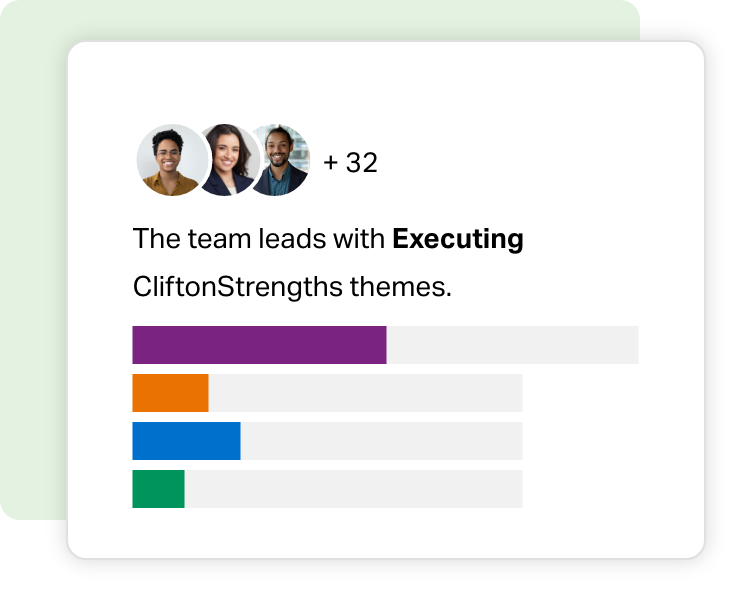
Fuel Success
Grounded in more than five decades of research, CliftonStrengths fuels the impact of key business priorities by leveraging the science of positive psychology to maximize the potential of individuals, teams and organizations.
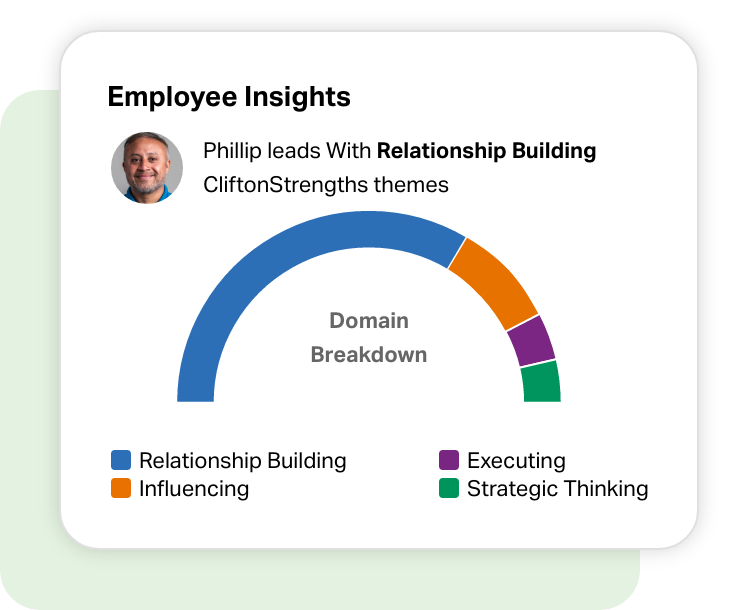
Boost Performance
By integrating strengths into workplace strategies, organizations can harness their employees' natural talents to drive outcomes, speed and growth.
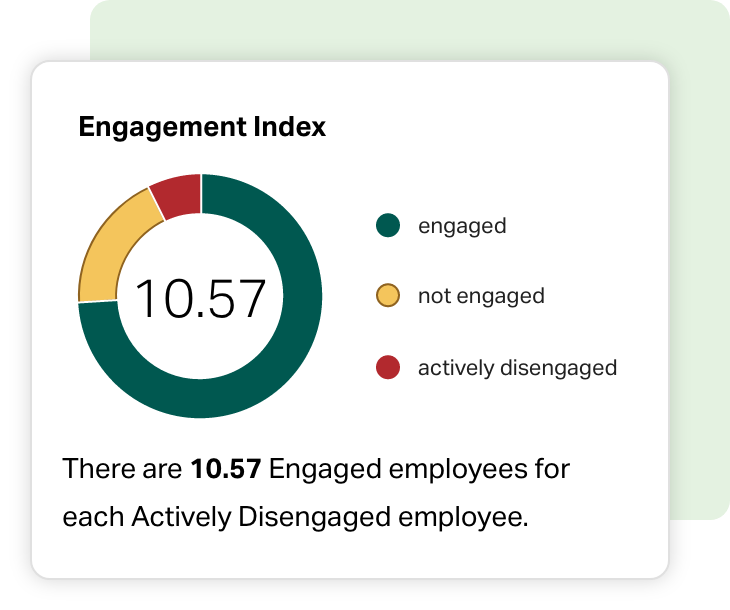
Create an Engaged Culture
Strengths integration can have a profound impact on key components of your workplace -- like performance management, engagement, wellbeing, company culture and more.
Maximize Results With Strengths-Driven Performance
Business Performance
19% higher sales
72% lower turnover
29% higher profit
Employee and Customer Engagement
23% higher employee engagement
7% higher customer metrics
Wellbeing
3x more likely to report excellent quality of life
10% higher citizenship and volunteerism
Accelerate Your Business Initiatives With CliftonStrengths
Incorporating CliftonStrengths doesn't mean changing your approach -- it's the catalyst to achieve the outcomes and objectives that matter most to you.
We give organizations the tools to tackle every aspect of the workplace:

Culture
- Change management
- Values/competencies
- Mergers and acquisitions
- Inclusion and belonging

Leadership
- Career development
- Succession planning
- Performance management
- Leading hybrid teams

Employee Experience
- Engagement
- Wellbeing and burnout
- Onboarding
- Customer centricity
Your Platform for Enhanced Organizational Performance
Gallup Access is an all-encompassing platform designed to accelerate how organizations drive employee performance and engagement. With a suite of analytical tools and educational resources, Gallup Access offers a singular solution for talent development.
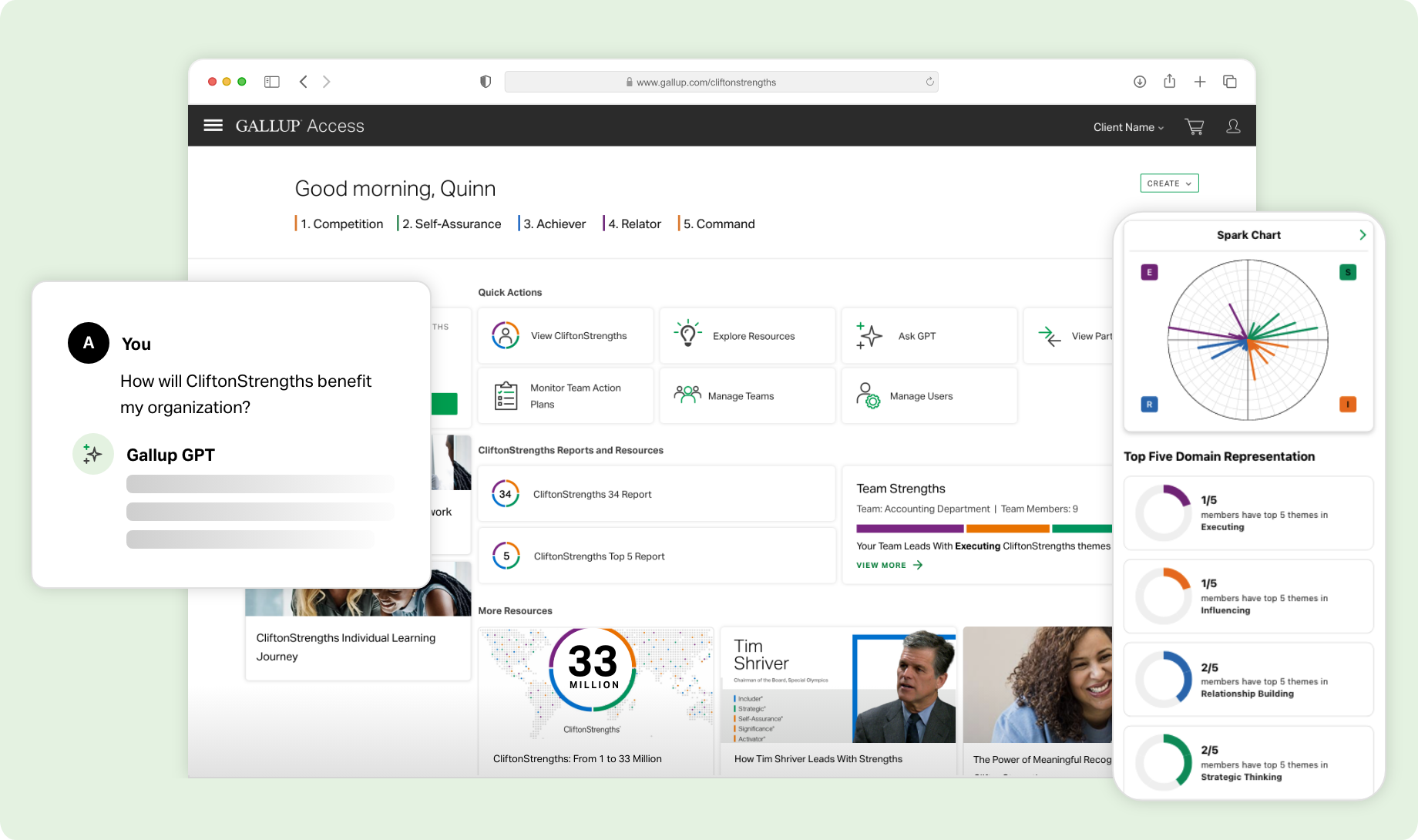
Unlock exclusive features by subscribing to the premium CliftonStrengths experience on Gallup Access, including:
CliftonStrengths Assessment: Identifies individuals' unique strengths and provides a common language for discussing and developing talent within the organization.
Resources for Leaders and Teams: Provides access to strengths strategies and resources to help managers lead effectively and foster team collaboration.
Mobile App: Allows users to view their strengths reports, share and compare with others, and receive personalized advice and insights, all from the convenience of their mobile device.
By providing clear insights into strengths and areas for improvement, Gallup Access empowers organizations to reach new heights of success.
Getting Started With CliftonStrengths
We are dedicated to helping companies integrate CliftonStrengths in a comprehensive and impactful manner. Our approach is designed to foster a strengths-based culture that empowers individuals and teams to excel. Here's how we achieve this:
Creating Strengths Experiences
Creating Strengths Experiences
Equip executives, leaders, managers and teams to apply and lead with their strengths.
-
Keynotes and Events to Launch
Inspire audiences with the power of positive psychology and empower them to play to their strengths. Gallup experts tailor each keynote to your target audience and to the mission and values of your organization.
-
Learning for Leaders, Managers and Teams
Gallup's custom learning roadmaps are built to cascade your education and enhance organizational effectiveness through quality-assured programs tailored to specific levels/roles, with the flexibility to incorporate company culture and address varied business needs for unique learning scenarios and complex problem-solving.
-
1-1 Coaching and 360 Assessments
Personalized development services that provide in-depth feedback and guidance to help individuals enhance their performance and leadership skills, fostering personal and professional growth within the organization.
-
Leader Dashboards for Succession Planning
Strategic tools provide a clear visualization of leadership potential within an organization, helping to identify and develop future leaders through performance metrics and readiness indicators.
-
Targeted High-Potential Programs
Designed to identify and develop star performers with the greatest potential to become future leaders within an organization, these programs often include personalized development plans, mentorship opportunities, paced key experiences and strategic project assignments to accelerate the growth of high-potential talent.
Strengths-Building Capability
Strengths-Building Capability
Build internal capability to embed and scale the strengths movement.
-
Coach and Champion Certification
Hands-on coaching and Engagement Champions courses reshape the conversation about the way an organization approaches development. These programs embed a radically different way to coach and develop others, helping individuals focus on their strengths and use them to produce hard-hitting results.
-
Train-the-Trainer Programs
These programs are designed to empower in-house facilitators with the expertise to deliver effective CliftonStrengths courses. Facilitators are equipped with the necessary skills and confidence to adhere to the curriculum's design and intention, teach effective practices for strengths application, receive valuable feedback from seasoned leaders, and utilize best practices for engaging learning experiences.
-
IP Licensing to Embed Gallup Content & Best Practices
This allows organizations to integrate Gallup's proprietary content and methodologies into their own systems and processes. This licensing grants access to Gallup's tools and best practices, enabling companies to enhance their learning and development strategies with proven, research-based approaches for improving engagement, performance and business outcomes.
-
Employee Experience Integration
Seamlessly incorporating CliftonStrengths tools into your organization's overall employee experience, enhancing the workplace by leveraging employee strengths and talents.
-
Best-Practice Application
Integrate Gallup's proven workplace strategies into your business framework, fostering a culture of strengths and driving performance.
Measuring the Impact of Strengths
Measuring the Impact of Strengths
Demonstrate qualitative and quantitative results driven by the power of strengths.
-
Advanced Strengths Analytics
Data analysis to measure and understand the impact of employee strengths on organizational and individual outcomes.
-
Strengths Accelerated Culture Index
Through our decades of research on the power of strengths, Gallup has created an index of recommended items to measure the impact of your strengths strategy on your organization's culture.
-
Strengths/Engagement Business Impact
Connect employee strengths with engagement metrics to drive tangible business outcomes. By aligning individual talents with key organizational goals, this solution enhances productivity, boosts morale, and delivers measurable improvements in overall performance.
-
Recognition Programs
A strengths-based approach helps create a more meaningful recognition system. Recognition is not a one-size-fits-all solution -- it's a strategic tool that contributes to higher morale, increased productivity and a stronger sense of team unity.
-
Spotlight Stories of Success
These stories showcase inspiring, real-life examples of individuals and organizations that have achieved remarkable outcomes using CliftonStrengths.
More Than 90% of Fortune 500 Companies Have Used CliftonStrengths
These companies bring the power of strengths-based development to their workplaces, every single day.
Southwest Airlines Culture Takes Flight and Soars
What started as a grassroots movement in the organization has turned into nearly 100% of the departments committing to CliftonStrengths implementation, starting their journey to make Southwest Airlines the world's first strengths-based airline.

Strengths and Diversity at Estée Lauder Companies
To achieve their vision of being the most inclusive and diverse beauty company in the world, Estée Lauder Companies committed to a swift rollout of CliftonStrengths, one that deeply embedded strengths into the foundation of their culture.
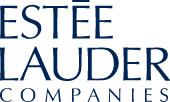
Stryker Uses Talent Offense to Succeed
With roughly 36,000 employees and around 300 active strengths coaches embedded in the organization, Stryker has put great thought into hiring the right people who are the best talent to achieve its mission of making healthcare better.

Developing Talent to Succeed at Ameritas
Many companies strive to improve the lives of their customers and employees. At Ameritas, this vision is more than a hopeful pursuit -- it's real in their work culture. Ameritas leaders at all levels have a strong commitment to creating a strengths-based and engagement-focused organization.

.
The Best Way to Build a Culture of Strengths Is Your Way
We want to show you how CliftonStrengths can help you transform your organization. Complete this form and Gallup will contact you to share how we can help you.
